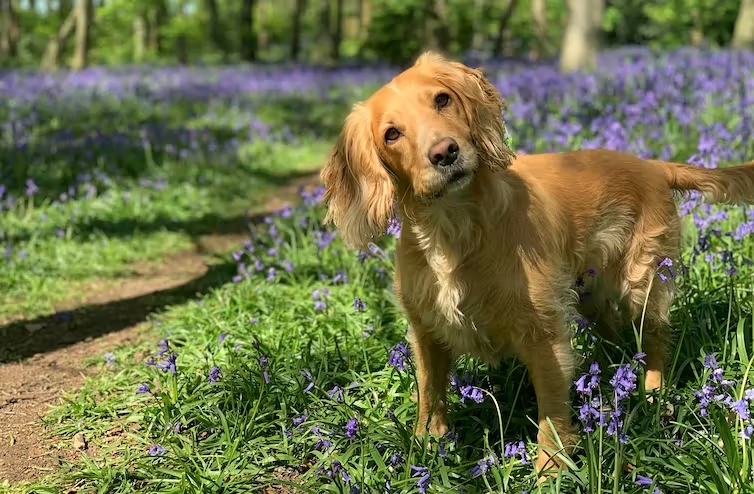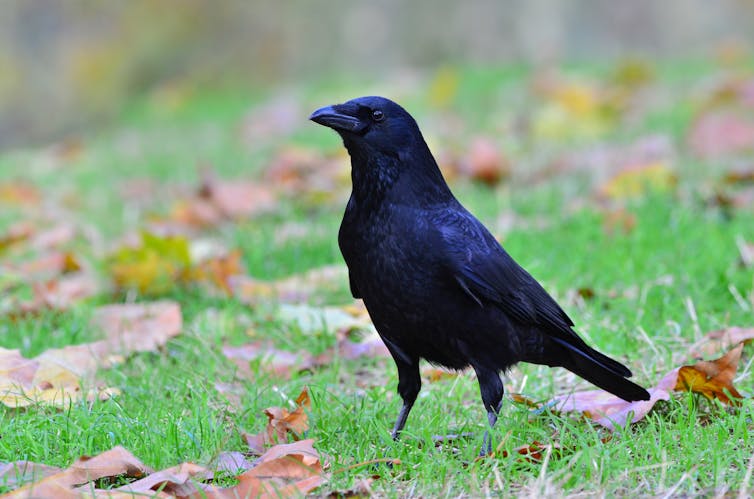Opinion: Want to help protect rare birds in nesting season? Keep your dog on its lead
Posted 23 March, 2023
 SGM/Shutterstock
SGM/Shutterstock
There are few sights more joyful than a dog bounding through the countryside. But for ground-nesting birds and other wildlife, the experience is quite different.
Letting a dog off its lead can disturb several species without the owner even noticing. And with spring and summer approaching, the breeding season for a vast array of wildlife, some environmental charities are (opens in a new window)urging people to keep their dogs under control and to stick to paths when walking in nature reserves.
The (opens in a new window)law already obliges dog owners in the UK to keep their pets on a lead no longer than two metres between March 1 and July 31 when on land with public right of access.
To be clear, the destruction of habitats as a result of changes in how the land is used, including intensive farming and road building, is a far greater cause of wildlife decline than anything the average dog is capable of.
But birds which build their nests and incubate eggs on the ground, such as curlews, yellowhammers and skylark, are put at greater risk of losing their offspring as a result of being disturbed.
A dog bursting through the undergrowth of a woodland or lolloping through tall grass on a moorland can flush out and frighten adult birds incubating their eggs in well-hidden nests.
The unguarded eggs and chicks are an easy target for predators, but even if they escape becoming a fox’s next meal, they may be abandoned. While certainly not the biggest threat to wildlife, your overly enthusiastic dog is another risk to the viability of eggs and chicks during a critical time of year.
Unintended consequences
The vulnerability of ground-nesting birds is reflected in statistics. Around 66% of ground-nesting species are in (opens in a new window)decline in the UK, compared to 31% of species which don’t nest on the ground, such as robins and blackbirds.

The energy that nesting birds use up to flee their nest can be considerable, especially if they are already under stress from having laid eggs. This may make them more vulnerable to disease or being eaten themselves. (opens in a new window)Research shows that birds are less likely to nest near trails in grasslands as a result.
The modern landscape, with its matrix of intensive farms, conifer plantations and roads, (opens in a new window)favours generalist predators such as (opens in a new window)foxes and crows which can swoop in and gobble up abandoned eggs and chicks. Although the exact causes of any species’ decline can be difficult to pinpoint, (opens in a new window)one study demonstrated that a leading cause of the low survival rate of curlew chicks was fox predation.
A crow, (opens in a new window)noticing a disturbance created by a person and their dog, can locate a nest when they otherwise wouldn’t have spotted it. Crows also appear to be more tolerant of these kinds of disturbances and will return to a site quicker than other species.

Although the impact on ground-nesting birds is unintended, disturbance by dogs during the breeding season is one threat to wildlife that people can easily prevent. Try letting your dog run free on fields or parks away from wild margins where birds may be nesting.
Ground-nesting birds are in (opens in a new window)a perilous state in the UK and across Europe. All possible efforts should be made to prevent them declining further, including keeping dogs on leads in spring and summer. Giving these species the best possible chance to maximise the number of healthy chick they produce is one way you can help.
More tips for wildlife-friendly pet ownership
-
Don’t let your dog jump in ponds. Not only can this disturb the fish and amphibians living there but chemicals in your dog’s flea treatment can (opens in a new window)poison the water.
-
Always pick up after your dog. High levels of phosphorous and nitrogen in dog poo can (opens in a new window)over-fertilise the ground and disrupt the ecology of a habitat, as well as spread disease.
-
Cats kill (opens in a new window)a lot of wildlife. Try to keep them indoors, but failing that, add a bell to their collar to warn potential prey.
By (opens in a new window)Barry John McMahon, Associate professor of Wildlife Conservation & Zoonotic Epidemiology, (opens in a new window)University College Dublin
This article is republished from (opens in a new window)The Conversation under a Creative Commons license. Read the (opens in a new window)original article.
UCD academics on The Conversation
- Opinion: The leap year is February 29, not December 32 due to a Roman calendar quirk – and fastidious medieval monks
- Opinion: Nigeria’s ban on alcohol sold in small sachets will help tackle underage drinking
- Opinion: Nostalgia in politics - Pan-European study sheds light on how (and why) parties appeal to the past in their election campaigns






